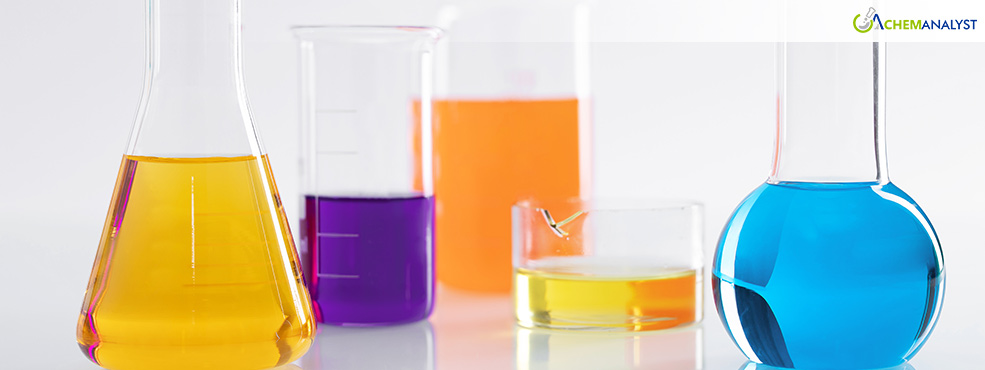Welcome To ChemAnalyst

By the beginning of December, Methyl Amine prices in the Asian market saw a notable decline, primarily due to inadequate stock management amidst shifting supply-demand dynamics. This fluctuation in Methyl Amine prices resulted from suppliers' inability to adjust inventory levels proactively, leading to a buildup of excess stock.
At the beginning of December, Methyl Amine prices in the Indian market decreased to 43,500 INR/MT Ex-Chennai. Balaji Amines inaugurated a state-of-the-art Methyl Amine plant at Unit IV on November 10, 2024, boosting its annual production capacity from 48,000 metric tons to 88,000 metric tons, with full capacity utilization projected by FY26/FY27. Despite this expansion, Q2 FY25 revenue declined to ?356 crores from ?393 crores in Q1 FY25, accompanied by reduced total volumes and EBITDA. Competitive pressures from Chinese imports forced Indian suppliers to lower their ex-quotation prices, aligning with prevailing market sentiments. These factors contributed to the price drop, while anticipation of anti-dumping measures aims to address ongoing pricing challenges.
In the Chinese market, Methyl Amine prices dropped to 700 USD/MT FOB-Qingdao, continuing their downward trajectory, primarily influenced by decreasing ammonia costs which is currently influenced by the heavily short build up activities from the market participants. This decline can be attributed to increased ammonia supply following the restart of facilities post-maintenance and improved urea-to-ammonia conversion rates. Additionally, Chinese manufacturers have intensified Methyl Amine exports, disrupting global markets. This export surge has compressed producer margins, leading to antidumping measures in the US and Europe on imports of certain chemicals, including aliphatic amines like Methyl Amine, further complicating market conditions.
On the logistics front, freight rates from the Far East to Europe held steady in November, while shipping costs to the US decreased, offering some relief for transportation expenses. Export volumes of aliphatic amines, including Methyl Amine, fell in October, signaling potential shifts within the supply chain. Additionally, the depreciation of the Chinese Yuan continues to strain manufacturer margins, further complicating export pricing. This currency depreciation reduces the value of revenues in stronger foreign currencies, exacerbating profitability pressures for exporters. Moreover, manufacturers are aggressively offloading stock at significantly reduced prices, leading to lower profitability for overseas market players.
ChemAnalyst anticipates that Methyl Amine prices will likely continue their downward trend in the near term, primarily due to an expected market oversupply exacerbated by weaker supplier actions in managing inventories effectively. Although freight charges remain stable, they are insufficient to counterbalance the downward pressure from oversupply, leaving pricing dynamics heavily influenced by excess market availability.
We use cookies to deliver the best possible experience on our website. To learn more, visit our Privacy Policy. By continuing to use this site or by closing this box, you consent to our use of cookies. More info.
